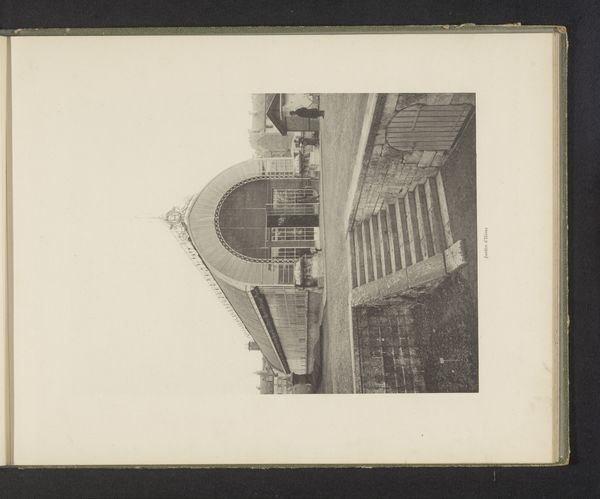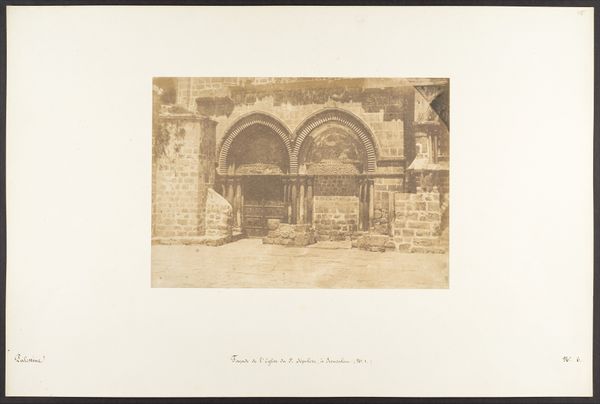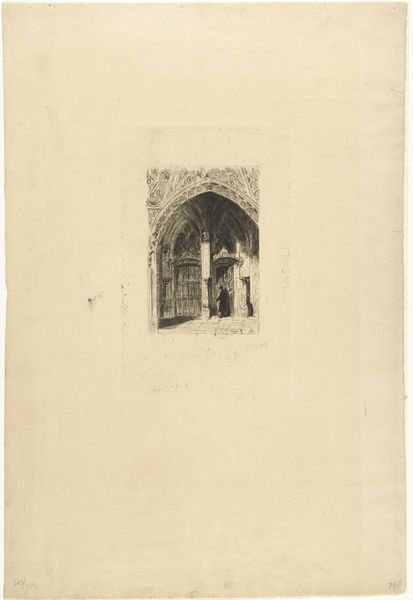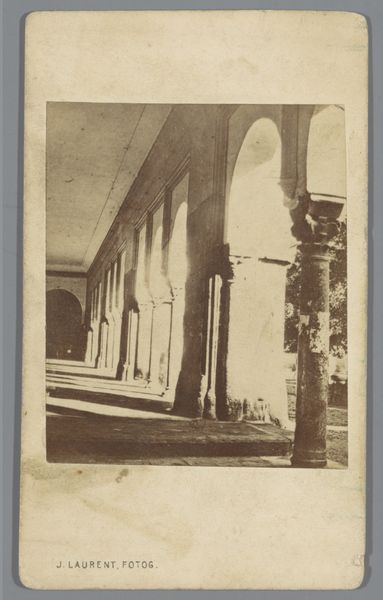
Sibyl ou Fontaine et Ecole de Souk-el-asr, au Kaire 1849 - 1850
0:00
0:00
print, daguerreotype, photography, architecture
# print
#
daguerreotype
#
photography
#
orientalism
#
cityscape
#
islamic-art
#
architecture
Dimensions: Image: 8 3/8 × 6 1/4 in. (21.2 × 15.8 cm) Mount: 12 5/16 × 18 11/16 in. (31.2 × 47.5 cm)
Copyright: Public Domain
Curator: Immediately striking, wouldn’t you agree? There’s an incredible stillness captured here. Editor: It does possess a certain austere beauty. This daguerreotype, created by Maxime Du Camp between 1849 and 1850, is titled "Sibyl ou Fontaine et Ecole de Souk-el-asr, au Kaire." It resides now at the Metropolitan Museum of Art. Curator: The composition is wonderfully geometric, with the curves of the architecture playing against what appears to be sharp framing on the bottom. But let’s explore its orientalist context— how does Du Camp portray Cairo? Editor: In this era, such images served to both document and exoticize the East. Consider that early photography held immense power in shaping Western perceptions of other cultures. The deliberate framing emphasizes the building as an artifact to be consumed. Curator: And it's not a pristine, monumental image either. Notice the degradation and the shadowy, almost decayed, impression— the picture's surface shows signs of age. Does this speak to a Western anxiety around permanence and time when contrasted with these ancient, potentially crumbling structures? Editor: Precisely. It taps into a discourse on Western modernity versus the supposedly stagnant East. Also, the "Sibyl" of the title evokes a classical connection, a subtle attempt to legitimize European engagement with the region through established cultural narratives. Curator: The light, though faded, emphasizes the architectural detail, calling out to an enduring geometric language even though we only glimpse a fragment of its grandeur. It offers more than pure documentation, a constructed gaze rather than mere observation. Editor: Undoubtedly. The photograph's power comes not only from its historical context, but from how Du Camp carefully fashioned an image for consumption, a visual artifact loaded with meaning and agendas. Curator: I find it fascinating how the photographic medium, then relatively new, immediately became a tool for constructing narratives, loaded with historical and political context from its very inception. Editor: Agreed. It prompts us to question not only what is shown, but why and for whom—insights that enrich the complex experience this daguerreotype evokes.
Comments
No comments
Be the first to comment and join the conversation on the ultimate creative platform.













